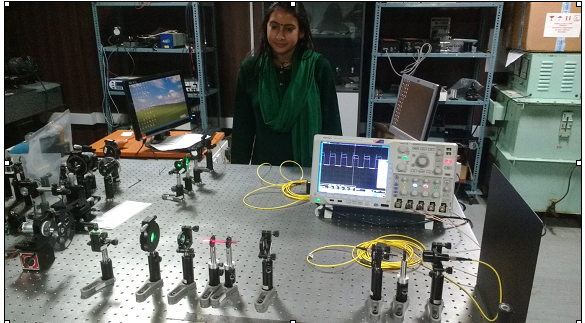Slow light: A boon for next-generation quantum technology
DR. SATCHI KUMARI
Light is the fastest carrier in the universe. It can travel 7.5 times around the earth in one second. Its tremendous speed, 300 million m/s, has made the global communication system superfast. On the contrary to this, scientists all over the globe have been rigorously finding ways to slow down the speed of light from millions of m/s to a few m/s. Slowly moving light interacts more with the medium, enabling quantum phenomena at low light intensities with improved sensitivity. The first breakthrough was achieved by Prof. Lene Hau and her group at Harvard University. She slowed down the speed of light to 17 m/s (60 km/h), almost the speed of a motorcar.
The discovery made a big impact on the scientific fraternity, and thereafter a series of experiments and theoretical investigations have been carried out to tune the speed of light over a wide range.
Since Prof. Hau’s experimental setup was very sophisticated and required cryogenic temperature (4 K) the next major concern was attaining slow light at room temperature in order to couple this technology with existing photonic devices. Prof. Robert Boyd, pioneer and global leader in the field of nonlinear optics, gave the first experimental demonstration of slow light at room temperature in a solid material, a ruby rod. Subsequently, many scientific endeavors were carried out in solids at room temperature, and ultraslow light has been demonstrated in photorefractive crystals, photonic crystals, quantum wells, and optical fibers. These demonstrations opened up the key for device applications.
The physics behind the generation of slow light is dispersion management. Dispersion is a well-known optical phenomenon where the speed of light reduces on traveling through a material medium. The formation of a rainbow in the sky when sunlight travels through the water droplets and the splitting of white light into its constituent seven colour after traveling through a glass prism are evidence of dispersion in nature. The reduction in speed of different colour (frequencies) by different amounts leads to these beautiful observations. The amount of reduction in speed is quantified by refractive index. By tailoring this frequency-dependent refractive index, slow light was generated and further tuned.
Slow light-based quantum computers can store the state of light for a sufficiently long time, enabling quantum operations. Further efficiency of optical nonlinear effects can improve by a factor of 10,000, making its observation at low laser powers, which generally require very high laser power, since slow light promotes strong light-matter interaction. Development of slow light-based quantum computers with improved data security, secure optical data storage with ultra-high density, and precision sensors is in progress. A lot of slowlight-based quantum technological boom is anticipated in the future.
An experiment on the slowing down of light in a ruby rod is being performed by the author, Dr. Satchi Kumari, DST Inspire Faculty at the Physical Research Laboratory, Ahmadabad.

